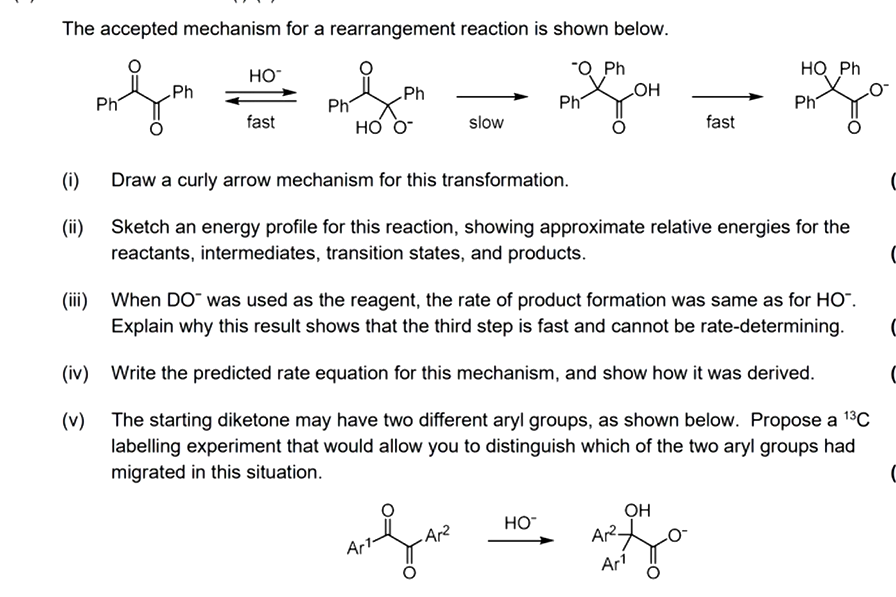The accepted mechanism for a rearrangement reaction is shown below. "Q Ph Ph Ph OH Ph J L G Ph Ph HO O (i) (ii) (iii) HO™ fast slow fast HQ Ph LO™ Ph Draw a curly arrow mechanism for this transformation. Sketch an energy profile for this reaction, showing approximate relative energies for the reactants, intermediates, transition states, and products. When DO™ was used as the reagent, the rate of product formation was same as for HO™. Explain why this result shows that the third step is fast and cannot be rate-determining.
Reactions of Ethers
Ethers (R-O-R’) are compounds formed by replacing hydrogen atoms of an alcohol (R-OH compound) or a phenol (C6H5OH) by an aryl/ acyl group (functional group after removing single hydrogen from an aromatic ring). In this section, reaction, preparation and behavior of ethers are discussed in the context of organic chemistry.
Epoxides
Epoxides are a special class of cyclic ethers which are an important functional group in organic chemistry and generate reactive centers due to their unusual high reactivity. Due to their high reactivity, epoxides are considered to be toxic and mutagenic.
Williamson Ether Synthesis
An organic reaction in which an organohalide and a deprotonated alcohol forms ether is known as Williamson ether synthesis. Alexander Williamson developed the Williamson ether synthesis in 1850. The formation of ether in this synthesis is an SN2 reaction.

Step by step
Solved in 4 steps with 4 images


